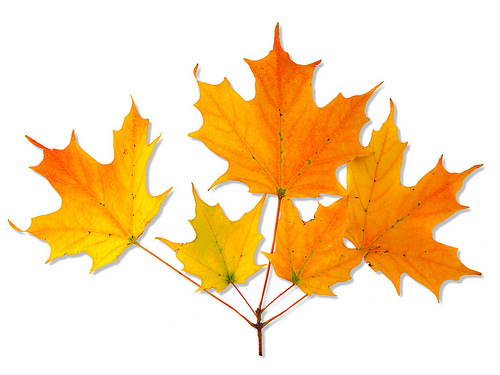Sugar Maple : Fall Foliage
The final value of sugar maples lies with their spectacular foliage. As mentioned in the natural history section, maples are deciduous and lose their leaves every autumn. Just before they drop off, however, they turn a variety of vibrant colors, from yellow to orange to red. The reasons for this are numerous and not entirely understood, but the general idea is clear. As the days get shorter, the trees stop producing new chlorophyll and begin drawing nutrients out of the leaves and back into the tree. Since the chlorophyll produces the green color of leaves, when it begins to die, the underlying colors of the leaf begin to appear. These are yellow, produced by the pigment xanthophyll, and orange, caused by carotene, which also gives carrots their color. These are always present in the tree and simply unmasked in the fall. Red, however, is caused by anthocyanin, a chemical that the tree actively produces in the leaves as they are dying. Scientists still have not determined a reason for this particular behavior or how it benefits the tree, since it must actually expend energy to produce the red coloration. Regardless of the reason, the combined display of thousands of trees, with red, orange and yellow leaves, is undeniably beautiful. People from all over the world are drawn to New England to see this natural show, for while all deciduous trees lose their leaves, only those in certain climates turn such gorgeous colors. For instance, aspens in the Rocky Mountains also turn colors in the autumn, but they all become a monotone yellow, with none of the flashy reds. Even sugar maples, when transplanted to areas with similar climates in Europe, do not produce the same level of foliage that they do in New England. The leaf peepers that come to see this annual display of color are a crucial component of the local economies during the period between summer vacations and winter skiing. This attractive coloration, along with the general form and shape of the tree, also make sugar maples popular landscape elements.

